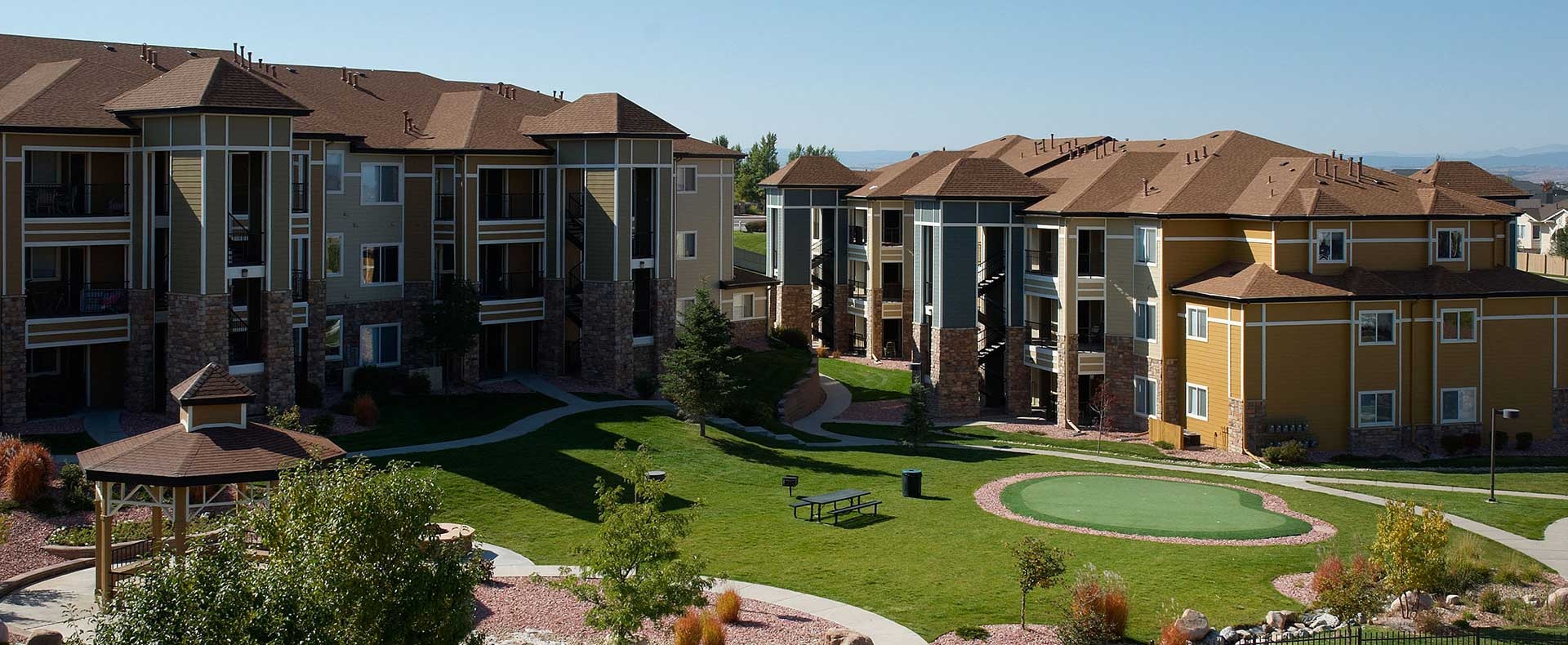As you gain experience looking at multifamily syndication business plans, you will find some underlying items in common with each business plan you review. These are things like how returns are generated, preferred rates of return (if any), predicted profits at sale, use of funds, as well as overall plan of things to improve in order to force the value of the property higher. There are also reg flags to look out for.
Most syndications will outline the various stages of the project they are raising funds for. First, there is the acquisition phase, where the sponsor will justify purchase price and the value of the surrounding neighborhood. Next is how the sponsor will directly affect the value of a property by making improvements in the structures themselves or in the business operations. There will often be a defined holding period in which there may or may not be a refinancing event. And finally, there is the disposition or sale of the property, hopefully at a value that has appreciated over the acquisition via natural market forces and/or intentionally forced appreciation.
Syndicator (Operator) Experience
Above all, you want to ensure that the team you are about to invest in is seasoned and has plenty of experience. This doesn’t mean that everyone on the team must have years of experience, in fact they can be new to syndications. In fact, most of the people on the team might be less experienced with syndicating a property. But there should absolutely be someone on the team who has faced prosperity as well as adversity in the multifamily space, and has deep knowledge in operating an apartment community. The operator needs to have the ability to assemble an A-team, be able to articulate and implement a solid syndication business plan, and be resourceful enough to overcome challenges that may arise.
Vetting a Sponsor
- Check their track record.
- Look for an A-team.
- Evaluate their real estate syndication and multifamily knowledge.
- Assess levels of trust and respect.
- Check for responsiveness in answering your questions.
Assumptions & Common Sense
You will want to make sure that the market where the project is located has strong demographic fundamentals which include population growth, a diversified local economy, a high demand for apartments, and must be affordable with respect to median incomes. When looking at the actual investment opportunity, you will want to understand and agree with the logic behind the pro forma details and projected returns of the syndication business plan.
The most important items for you to consider and understand are the potential risks, proposed returns, the syndication business plan that will be executed on, and the equity structure. Every assumption must be logical and based on facts as well as market dynamics. It is not your job as a passive investor to underwrite a project yourself, but you do need to ensure you have complete faith in the sponsor’s underwriting assumptions.
Stress Tests & Risks
You need to make sure that the syndicator you are planning on investing with has a plan for eventualities. Stuff happens. Because of this, we need to always expect the unexpected. By thinking about the things that might affect our investment, we can better prepare ourselves for what lies ahead. Here are some questions to ask yourself or the sponsor:
Demand – What happens when there is a drop off of rental demand? We see a trend of people moving out of the huge population markets, so what effects will this have on my investment?
Job losses – Is the area strong enough demographically to absorb rampant job losses? Is there a single employer for the area or are the job industries diversified?
Natural disaster – What will happen if the area floods? Is the property in a flood zone?
Insurance coverage – Is there enough of the right kinds of insurance to protect against the unexpected? Will the insurance protect my investment, and if so, how?
Uncontrollable costs – What will happen in the case of a sharp rise in construction materials, like lumber? How will the syndicator make changes to the syndication business plan to mitigate its negative effects? Are all costs illustrated in the business plan actually realistic? Are the salaries fair and are personnel needs accounted for? Is the project protected against interest rate increases?
Tax hikes – Are there any political changes that might cause property taxes to shoot up? How often do taxes get assessed on a property? Will simply the purchase of the property cause the taxes to rise?
Insufficient cashflow – Is there enough cash invested to keep the project afloat? Is the syndicator raising sufficient equity funding? Are the underlying revenue assumptions realistic? Is the debt appropriate for the project, and is it interest only?
Exit valuation – Does the profit of a project rely solely on the disposition (sale) at the end? Is the underlying cap rate of the sale higher or lower?
Loan maturity – Will the loan come due during the project hold, and if so, what is the likelihood of getting new financing? Will there be any prepayment penalties if the property is sold before the loan matures?
Returns – Are the projected return consistent with my investment goals? Will returns be distributed monthly, quarterly or yearly? When do I get my initial investment back?
Conservative Underwriting
Most sponsors will tell you that they underwrite their projects conservatively, in that they do their best to refrain from making projections based on best-case scenarios. Some syndicators are more aggressive than others, so part of your job is to separate fact from fiction. Underwriting a project involves gathering and verifying all facts and making assumptions that are realistic in any given circumstance. In the case of multifamily real estate, it is the process of financially assessing an apartment complex project to calculate the projected returns of a project taking into account all aspects of acquisition, debt and equity financing, syndication business plan, and disposition assumptions. Ideally, you do not want to see anything out of whack.
How is Value Being Added?
At the heart of every good investment opportunity is the syndication business plan. It outlines the HOW of the way a project will be run and managed. It needs to be pragmatic, detailed and show clear objectives, strategies and tactics, and will provide the pro forma incomes as well as expenses. As most syndicators have a value-add goal in mind, the business plan needs to show how higher quality tenants will be acquired and how vacancies will be reduced, identify improvements to the property along with associated construction costs, and changes in expenses and incomes. They need to logically show why the plan makes sense in the context of the surrounding neighborhood and all the things they intend to achieve.
In addition to the business plan outlining ongoing operations, the purchase price of the property needs to be fair, or even better, undervalued. The acquisition must be justified in terms of value as well as location. The surrounding area must be able to support the syndication business plan, and risks become greater in many ways as the neighborhood becomes less desirable. Improvements to the property need to make sense as well. If the project is a class C property in a class B neighborhood, or for that matter, a class B in a class A area, you might expect to see a large renovation budget for higher-end finishes. As long as the goal is to bring the property up to surrounding standards, and acquisition as well as renovation costs does not cause any overspending, this could signal an excellent investment opportunity.
The length of the project needs to be considered in addition to all other aspects of the underlying investment, which can vary depending on the individual property, sponsor, and the (value-add) business plan. A typical syndication will last around 5 years, so it is pretty important that it cash flows during that time. The heavy lifting of the value-add renovations will usually be done in the first few years, and the revenue that the property generates because of this will contributing to the property’s appreciation in value. There might be a refinance of the property as it surpasses appreciation goals, allowing for the cash out of all or part of your investment. This could also signal time to sell the property altogether.
Equity Structure
Operators need to make money. Without that, a project is doomed to failure from the onset, and will likely not get off the ground. Monetary rewards incentivize them to put a project first and take whatever steps needed to ensure its success. At the same time, investors need to make money too. It can be a delicate balancing act to make sure each of these needs is met and that interests are aligned. Most syndication investment opportunities address the following and aim to strike just the right balance:
Split – This applies to the way any profits are divvied up to the general and limited partners. This might look something like a 70/30, 80/20 or even an 85/15 split with the higher number (percentage) going to you, the investor.
Preferred returns – This designates an amount of profits paid to limited partners before being able to pay the general partners. An example of how this might look is an 8% preferred return. This means that of the available cash profits able to be distributed, the investor would receive the equivalent of an 8% return on their investment before any split of profits can be applied and distributed.
Hurdles (with changes of split) – You will see this in many deals and incentivizes the additional hard work on the part of the operator to perform (manage a property well) and exceed expectations. It sets a target that might change the split when a project becomes highly profitable. For example, if instead of an 8% return to investors, the operator is able to return 15%, anything over and above that might be split 50/50. In this case, the hurdle is a 15% return, and any profits exceeding that percentage would yield 50% to you and 50% to the sponsor.
Fees – Typically, operators will charge different fees designed to incentivize them to work hard on your behalf. I believe that as long as these are not excessive, they are necessary. You wouldn’t want your sponsor to have to go out and get a 9-5 job just so that they can support themselves while they are managing your investment. Fees come in the form of asset management fees (usually 1%-3%), acquisition fees (likely 1.5%), loan guarantee fees, and disposition fees.
Syndication Business Plan – Last Word
Do your homework. Make sure you understand everything that is being presented to you in an offer, and recognize how all the facts interrelate with each other. Ensure that assumptions are realistic, and that the business plan is doable. Lastly, make friends with your sponsor as they will help you achieve your financial goals, and should be considered a long-term ally.




